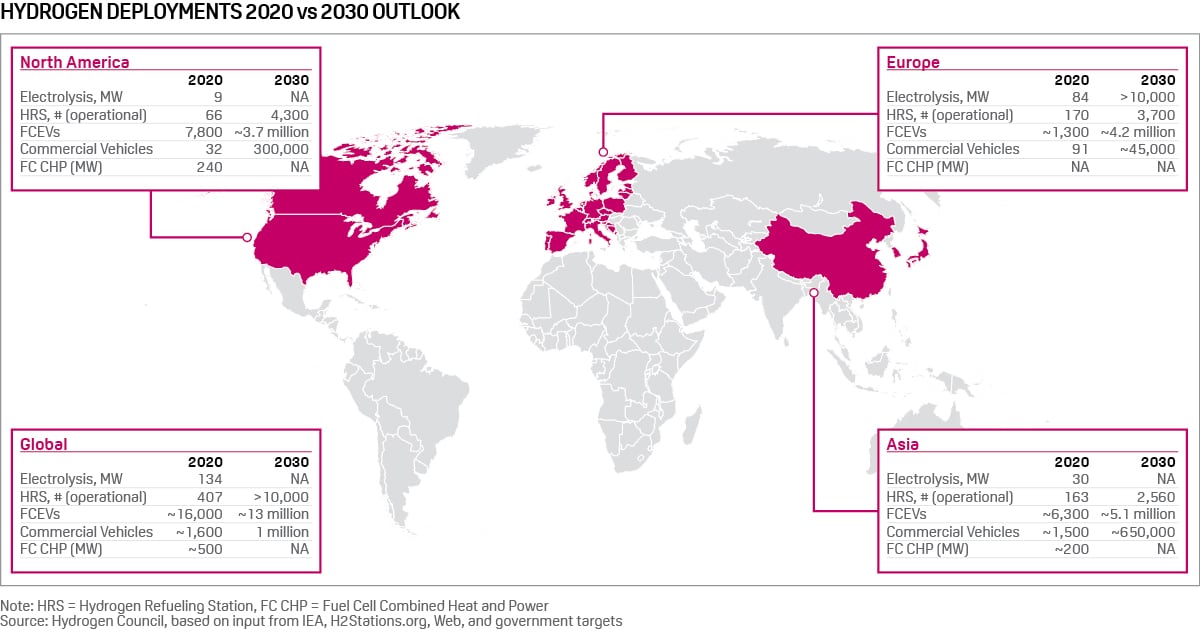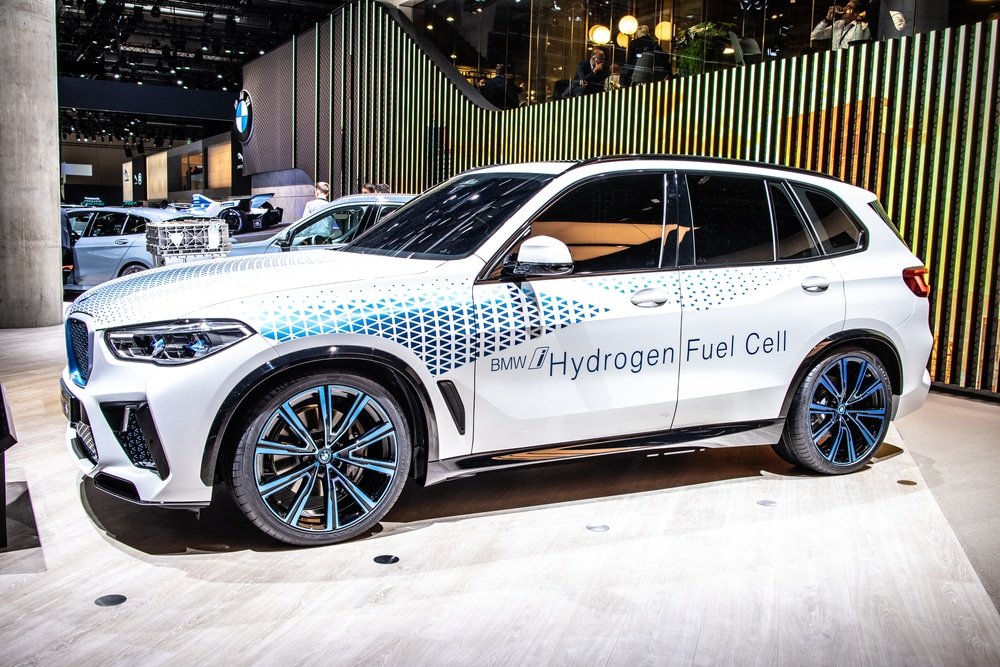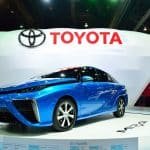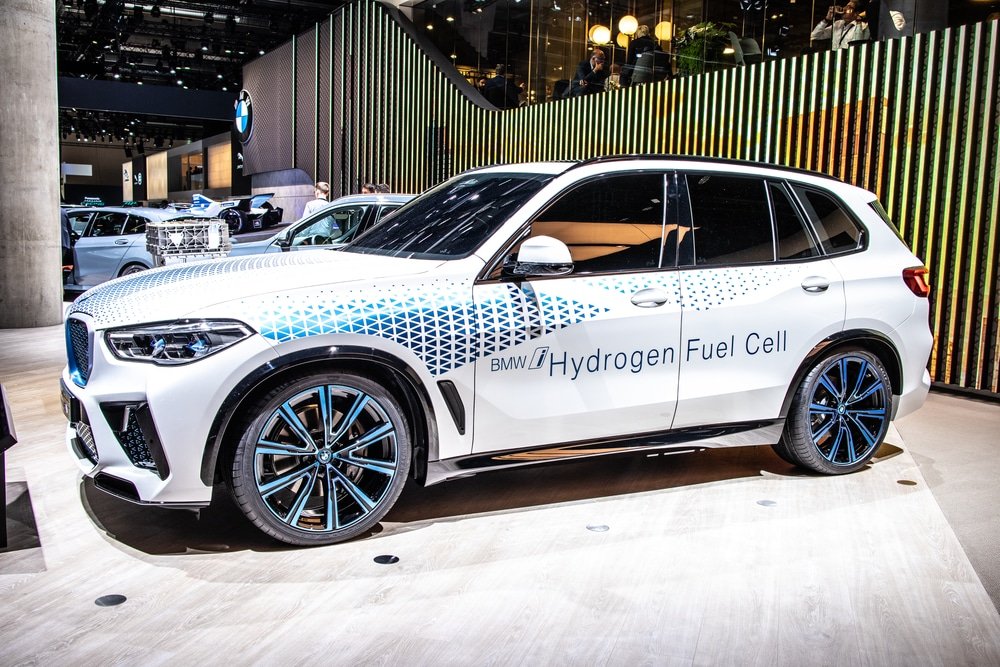As the automobile industry shifts to electric vehicles to reduce carbon emissions, there’s an alternative option that’s starting to gain traction and showing the great potential of zero-emission vehicles (ZEVs) – hydrogen fuel cells. Leading automakers are investing heavily in the development of this game-changing vehicle fuel cell technology, particularly Toyota and BMW.
In a hydrogen fuel cell EV (FCEV),specially-made cells burn hydrogen with oxygen. Hydrogen combustion produces only water and warm air as a byproduct. Thus, it can potentially reduce 36 billion tons of CO2 emitted each year from burning fossil fuels.
In 2022, just over 810 refueling stations for FCEVs are operating worldwide, which remains very insignificant for rapid adoption. However, an industry report projects that FCEVs could reach 13 million by 2030, with >10,000 refueling stations globally.

BMW Hydrogen Car Drives Around The World
BMW believes that hydrogen fuel cell technology will play an important role in fighting climate change, alongside battery electric vehicles. The carmaker has been studying and working on this zero-emission vehicle tech since 2000.
In their pledge to reach net zero emissions by 2050, the German brand is ramping up its hydrogen development game. It has started developing its own hydrogen fuel cells, which brought to life the BMW iX5 Hydrogen pilot fleet. The H2 vehicle was launched in February this year.

According to the automaker, its hydrogen-powered iX5 won’t flinch at freezing temperatures at -20°C. This H2 vehicle had just completed an intensive hot-weather test in Dubai for the first time, performing impressively despite the scorching 45°C temperature of the Middle East.
The BMW development team has examined all the electric systems and how cooling is done when driving under extreme weather conditions, ensuring that performance and range aren’t compromised.
The hydrogen fuel powering the cells is stored in two 700-bar tanks, holding a total of 6 kilograms of H2.
About 100 of these BMW hydrogen vehicles were deployed worldwide for testing across different target groups for demonstration purposes. They have proven to be a hit in Germany, California, and the Middle East, while also driving around Japan, Korea, the US, and China.
Producing FCEV by 2030
The results from these road trials are key for the German automaker to help build sufficient refueling infrastructure that can serve all types of vehicles, from passenger cars, and small vans to heavy-duty commercial vehicles. They are crucial for building a robust network of hydrogen technology suppliers, which can reduce costs.
- First Hydrogen’s FCEVs were a massive success, beating expectations for commercial vehicles.
The BMW iX5 Hydrogen offers long-distance capability and short refueling stops for zero-emission driving. The German carmaker’s long-term goal is to bring these pilot hydrogen vehicles into production by 2030.
To meet such a target, BMW partnered with its Japanese peer and a strong FCEV advocate, Toyota, to study the future of this emerging technology.
Toyota has also set an ambitious goal of getting its recently revealed hydrogen-powered truck Hilux on the market by 2030.
Toyota Hydrogen Hilux Debuts with 365-Mile Range
In July this year, Toyota made headlines when it announced that it was going to sell 200,000 hydrogen-powered vehicles. It specifically targeted China and European markets.
This month, the Japanese automaker reached another milestone by debuting its FCEV prototype Hilux. This announcement shows Toyota’s broader scope in achieving its decarbonization goals, which largely involve the global deployment of hydrogen vehicles.

Hilux is a global icon of the Toyota brand known globally for its durability and outstanding reliability. This hydrogen vehicle features a new powertrain that uses Toyota Mirai’s FCEV main components.
As a ZEV, the Toyota Hilux emits no tailpipe pollution other than water.
In terms of drive range, it seems to outperform BMW’s FCEV by boasting over 600 km (365 mi) with its 3 high-pressure tanks. If the results are successful, Toyota will proceed with small-scale production. However, specific details of the hydrogen-powered Hilux weren’t shared.
The first of 10 Hilux will be made by the end of 2023. These FCEV will go through rigorous testing for safety, functionality, and durability to adhere to production standards.
Other major carmakers are also considering hydrogen fuel cells for their vehicles such as Honda and Hyundai. The luxury brand Land Rover is also developing its own FCEV as a strategy to meet net zero emissions by 2036.
- BREAKING: First Hydrogen Corp (FHYD) Fuel Cell ZEV WERE A MASSIVE SUCCESS, BEATING EXPECTATIONS.
The automobile industry seems to be inching closer to the hydrogen era as the world seeks innovative solutions to fight climate change. Hydrogen-powered vehicles are emerging as a promising alternative to traditional fossil fuel-powered cars, with BMW and Toyota at the forefront of this revolutionary shift, investing heavily in hydrogen fuel cell technology.
Disclosure: Owners, members, directors, and employees of carboncredits.com have/may have stock or option positions in any of the companies mentioned: FHYD.
Carboncredits.com receives compensation for this publication and has a business relationship with any company whose stock(s) is/are mentioned in this article.
Additional disclosure: This communication serves the sole purpose of adding value to the research process and is for information only. Please do your own due diligence. Every investment in securities mentioned in publications of carboncredits.com involves risks that could lead to a total loss of the invested capital.

